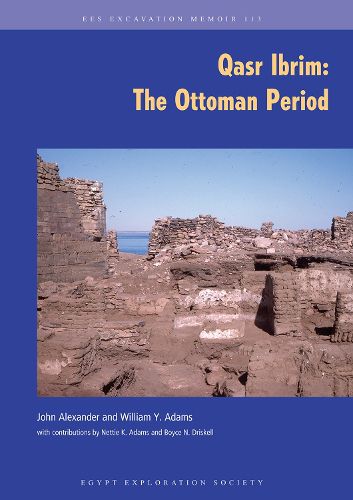Readings Newsletter
Become a Readings Member to make your shopping experience even easier.
Sign in or sign up for free!
You’re not far away from qualifying for FREE standard shipping within Australia
You’ve qualified for FREE standard shipping within Australia
The cart is loading…






This volume completes the documentation of excavations at the Nubian site of Qasr Ibrim conducted by the Egypt Exploration Society, continuing the tradition of documenting the history and archaeology of the site phase-by-phase. Previous monographs dealt with the Ballana phase (c. AD 350-600), the earlier (c. 600-1172) and the later medieval period (c. 1172-1500). The present work carries the story forward to the final abandonment of the site in AD 1812, the period when Lower Nubia was annexed to the Ottoman Empire, and an Ottoman garrison was installed at Qasr Ibrim. Part I deals with the historical record of the site, based on archival sources, Part II presents the archaeological evidence, followed in Part III by brief summaries on the Ottoman period artefacts found at the site, in particular pottery (by William Y. Adams), basketry (by Boyce N. Driskell), and textiles (by Nettie K. Adams)
$9.00 standard shipping within Australia
FREE standard shipping within Australia for orders over $100.00
Express & International shipping calculated at checkout
This volume completes the documentation of excavations at the Nubian site of Qasr Ibrim conducted by the Egypt Exploration Society, continuing the tradition of documenting the history and archaeology of the site phase-by-phase. Previous monographs dealt with the Ballana phase (c. AD 350-600), the earlier (c. 600-1172) and the later medieval period (c. 1172-1500). The present work carries the story forward to the final abandonment of the site in AD 1812, the period when Lower Nubia was annexed to the Ottoman Empire, and an Ottoman garrison was installed at Qasr Ibrim. Part I deals with the historical record of the site, based on archival sources, Part II presents the archaeological evidence, followed in Part III by brief summaries on the Ottoman period artefacts found at the site, in particular pottery (by William Y. Adams), basketry (by Boyce N. Driskell), and textiles (by Nettie K. Adams)